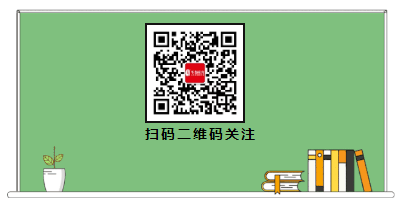专家:今年通胀水平总体温和可控
Mild, controllable inflation expected
国家统计局日前发布的数据显示,4月份全国居民消费价格指数同比上涨2.1%,创下五个月来的最大涨幅。专家和分析人士指出,未来几个月物价可能还将继续走高,但是我国今年通货膨胀整体将保持温和可控的水平。Mild, controllable inflation expected
China's inflation is expected to remain mild and controllable this year, leaving room for macro policy fine-tuning and adjustment, experts and analysts said on Wednesday.
专家和分析人士5月11日表示,我国今年通货膨胀将保持温和可控的水平,为宏观政策调整提供了操作空间。
They warned of multiple pressures from shrinking demand, supply shocks and weakening expectations amid resurgent domestic COVID-19 cases, as well as a more complicated and grimmer external environment, and said a stronger macro policy response was likely in order to stabilize expectations and shore up growth.
专家和分析人士警告称,当前国内新冠疫情反复,国外环境更加复杂严峻,国内经济发展面临“需求收缩、供给冲击、预期转弱”三重压力,并指出政府为了稳定预期和支撑经济增长可能会出台更有力的宏观政策。
The country's consumer price index, a main gauge of inflation, rose 2.1 percent year-on-year in April amid rising prices of fresh vegetables, fresh fruit and diesel fuel, marking the fastest pace in five months, the National Bureau of Statistics said on Wednesday.
5月11日,国家统计局发布的数据显示,4月份,全国居民消费价格指数同比上涨2.1%,创下五个月来的最大涨幅,鲜菜、鲜果、柴油价格均有所上涨。消费价格指数是衡量通货膨胀水平的重要指标。
Meanwhile, the country's factory-gate prices rose in April at the slowest rate in a year as the government took steady steps to ensure stable supplies and prices amid international commodity price hikes. China's producer price index, which gauges factory-gate prices, increased 8 percent year-on-year in April, the NBS said.
与此同时,尽管国际大宗商品价格高位运行,但政府坚决贯彻落实保供稳价决策部署,因此出厂价格涨幅回落至今年最低水平。国家统计局数据显示,全国工业生产者出厂价格指数同比上涨8.0%。
Wen Bin, chief researcher at China Minsheng Bank, said China's overall inflation level is mild and controllable. Wen said he expected policymakers to increase monetary policy support for hard-hit enterprises and sectors amid COVID-19 outbreaks, which will help ease enterprises' burden and promote economic growth to a reasonable range.
中国民生银行首席研究员温彬表示,中国通胀整体处于温和可控水平。温彬预期货币政策将持续加大对受疫情影响严重行业企业的支持力度,助企纾困,促进经济运行在合理区间。
Wen attributed the growth in consumer inflation to food and energy, warning of inflation pressure amid rising international commodity prices. He said more efforts are needed to ensure stable supplies and prices and ensure smooth logistics.
温彬将消费价格指数上涨归因于食品和能源价格的上涨,并指出要警惕国际商品价格上涨引起的输入性通胀压力。温彬表示,要加大保供稳价力度,确保物流畅通。
Zhou Maohua, an analyst at China Everbright Bank, said that while the slower increase of the producer price index will help ease pressures on costs for some midstream and downstream manufacturing enterprises, the 8 percent increase in the PPI suggests that raw material prices remain high.
光大银行研究员周茂华指出,4月份出厂价格指数同比趋缓,表明部分中下游制造业商品材料成本压力有所缓解,但同比仍维持8.0%的高增速,可见商品原材料价格仍处于高位运行。
"Many midstream and downstream manufacturing enterprises still face pressure from high production costs," he said.
他说:“许多中下游制造业企业生产投入成本压力尚存。”
Looking ahead, Zhou estimated that China's consumer inflation may continue the uptrend seen in the last month but will remain mild overall.
展望后期走势,周茂华预计,年内消费价格指数同比仍有一定上升空间,但消费者物价动能保持温和。
He said the uptrend may continue in the following months, given the resurgent domestic COVID-19 cases, fluctuation of energy prices, a recovery in pork prices and a low comparison base.
周茂华表示,考虑到本土疫情反复、能源价格波动、猪肉价格触底回升和低基数效应,未来几个月物价可能还将继续走高。
However, overall, China's inflation will remain mild given the government's solid moves to control the epidemic, increase the support for enterprises, ensure stable supplies and prices, stabilize industrial and supply chains and ensure smooth logistics, Zhou added.
但是,周茂华称,由于政府严控疫情,企业纾困、保供稳价政策落地,产业链供应链、物流链畅通,我国通胀将整体保持温和水平。
英文来源:中国日报

扫描二维码关注华慧考博官方微信公众号
发送消息"6"即可免费领取超值考博资料









